Showing Spotlights 737 - 744 of 2879 in category All (newest first):
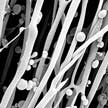 By employing 3D scaffolds with both aligned nanofibers and aligned interconnected macrochannels, researchers have taken a nanotechnology-based tissue engineering approach to accelerate the regeneration and repair of damaged tissues at the wound site by directing cells and tissues to grow towards the target site. Their hope is that this leads to the development of affordable and functional biodegradable wound dressings for accelerated healing of chronic skin wounds by promoting regeneration of local tissues.
By employing 3D scaffolds with both aligned nanofibers and aligned interconnected macrochannels, researchers have taken a nanotechnology-based tissue engineering approach to accelerate the regeneration and repair of damaged tissues at the wound site by directing cells and tissues to grow towards the target site. Their hope is that this leads to the development of affordable and functional biodegradable wound dressings for accelerated healing of chronic skin wounds by promoting regeneration of local tissues.
Aug 16th, 2018
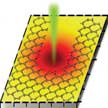 Researchers have developed an all-optical lithographic technique called 'optothermoplasmonic nanolithography' (OTNL) to achieve high-throughput, versatile, and maskless patterning of different atomic layers. Taking graphene and molybdenum disulfide monolayers as examples, the team shows that both thermal oxidation and sublimation in the light-directed temperature field can lead to direct etching of the atomic layers. They further demonstrates programmable patterning of 2D materials into complex and large-scale nanostructures by steering the laser beam.
Researchers have developed an all-optical lithographic technique called 'optothermoplasmonic nanolithography' (OTNL) to achieve high-throughput, versatile, and maskless patterning of different atomic layers. Taking graphene and molybdenum disulfide monolayers as examples, the team shows that both thermal oxidation and sublimation in the light-directed temperature field can lead to direct etching of the atomic layers. They further demonstrates programmable patterning of 2D materials into complex and large-scale nanostructures by steering the laser beam.
Aug 14th, 2018
 Though nanotechnology is portrayed as a fairly recent human invention, nature is actually full of nanoscopic architectures. They underpin the essential functions of a variety of life forms, from bacteria to berries, wasps to whales. In fact, tactful use of the principles of nanoscience can be traced to natural structures that are over 500m-years-old. Below are just five sources of inspiration that scientists could use to create the next generation of human technology.
Though nanotechnology is portrayed as a fairly recent human invention, nature is actually full of nanoscopic architectures. They underpin the essential functions of a variety of life forms, from bacteria to berries, wasps to whales. In fact, tactful use of the principles of nanoscience can be traced to natural structures that are over 500m-years-old. Below are just five sources of inspiration that scientists could use to create the next generation of human technology.
Aug 13th, 2018
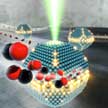 By combining advanced high-precision electron microscopy and computational methods, researchers have shed new light on the role of strain in nanoparticle catalysis. Catalytic metal nanoparticles supported on oxide substrates are used on a large scale in technological applications such as production of chemicals, abatement of air pollution and sustainable energy systems. The overall performance and durability of these systems is influenced by a range of factors, and every improvement could result in noticeable environmental and economic benefits.
By combining advanced high-precision electron microscopy and computational methods, researchers have shed new light on the role of strain in nanoparticle catalysis. Catalytic metal nanoparticles supported on oxide substrates are used on a large scale in technological applications such as production of chemicals, abatement of air pollution and sustainable energy systems. The overall performance and durability of these systems is influenced by a range of factors, and every improvement could result in noticeable environmental and economic benefits.
Jul 31st, 2018
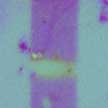 Traditional CMOS technology cannot be directly merged with graphene applications. Photo- and electron-based lithographies, which are the main processess in today's semiconductor industry, requires use of polymers and harsh liquids that can drastically alter the initial properties of graphene. Thus graphene requires the development of novel processing technologies.
A international team of researchers now has developed a method for direct, on-the-fly reconstruction of graphene properties.
Traditional CMOS technology cannot be directly merged with graphene applications. Photo- and electron-based lithographies, which are the main processess in today's semiconductor industry, requires use of polymers and harsh liquids that can drastically alter the initial properties of graphene. Thus graphene requires the development of novel processing technologies.
A international team of researchers now has developed a method for direct, on-the-fly reconstruction of graphene properties.
Jul 30th, 2018
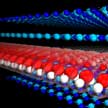 An international team of researchers has discovered a new mechanism for controlling electronic devices using molecules. The ferroelectric ordering of polar molecules attached to the edge of graphene can be toggle-switched by an electrostatic gate and can be used for memory devices and sensors. For this work, the team sandwiched graphene layers in hexagonal boron nitride crystals. The trick is to control the edge chemistry. The researchers attached different atoms to the graphene edges, before exposing them to water vapor and other polar molecules.
An international team of researchers has discovered a new mechanism for controlling electronic devices using molecules. The ferroelectric ordering of polar molecules attached to the edge of graphene can be toggle-switched by an electrostatic gate and can be used for memory devices and sensors. For this work, the team sandwiched graphene layers in hexagonal boron nitride crystals. The trick is to control the edge chemistry. The researchers attached different atoms to the graphene edges, before exposing them to water vapor and other polar molecules.
Jul 27th, 2018
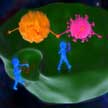 Scientists propose a novel tumor treatment strategy for simultaneous ablating tumor and inhibiting infection by using specially designed biodegradable metal-organic frameworks (MOFs). The strategy of simultaneous eradicating tumor tissue and inhibiting infection can inspire the researchers with novel progressing technologies for tumor therapy. This novel strategy opens the door for developing the nanomaterials that are sensitive to microwave irradiation and inhibiting infection to achieve noninvasive combined treatment in clinical practice.
Scientists propose a novel tumor treatment strategy for simultaneous ablating tumor and inhibiting infection by using specially designed biodegradable metal-organic frameworks (MOFs). The strategy of simultaneous eradicating tumor tissue and inhibiting infection can inspire the researchers with novel progressing technologies for tumor therapy. This novel strategy opens the door for developing the nanomaterials that are sensitive to microwave irradiation and inhibiting infection to achieve noninvasive combined treatment in clinical practice.
Jul 23rd, 2018
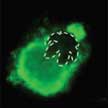 Research on micro- and nanomachines has advanced from the observation and understanding of basic motion behavior to the constantly improving capabilities of performing complex tasks. This ranges from interaction with bacteria to propulsion based on cells and in vivo medical applications. A review looks at the applications of micro- and nanomachines in living biosystems from two aspects: the interaction of micro/nanomachines with other microscopic organisms or biological units, and the efforts toward application of micro/nanomachines in human body.
Research on micro- and nanomachines has advanced from the observation and understanding of basic motion behavior to the constantly improving capabilities of performing complex tasks. This ranges from interaction with bacteria to propulsion based on cells and in vivo medical applications. A review looks at the applications of micro- and nanomachines in living biosystems from two aspects: the interaction of micro/nanomachines with other microscopic organisms or biological units, and the efforts toward application of micro/nanomachines in human body.
Jul 5th, 2018
 By employing 3D scaffolds with both aligned nanofibers and aligned interconnected macrochannels, researchers have taken a nanotechnology-based tissue engineering approach to accelerate the regeneration and repair of damaged tissues at the wound site by directing cells and tissues to grow towards the target site. Their hope is that this leads to the development of affordable and functional biodegradable wound dressings for accelerated healing of chronic skin wounds by promoting regeneration of local tissues.
By employing 3D scaffolds with both aligned nanofibers and aligned interconnected macrochannels, researchers have taken a nanotechnology-based tissue engineering approach to accelerate the regeneration and repair of damaged tissues at the wound site by directing cells and tissues to grow towards the target site. Their hope is that this leads to the development of affordable and functional biodegradable wound dressings for accelerated healing of chronic skin wounds by promoting regeneration of local tissues.
 Subscribe to our Nanotechnology Spotlight feed
Subscribe to our Nanotechnology Spotlight feed





